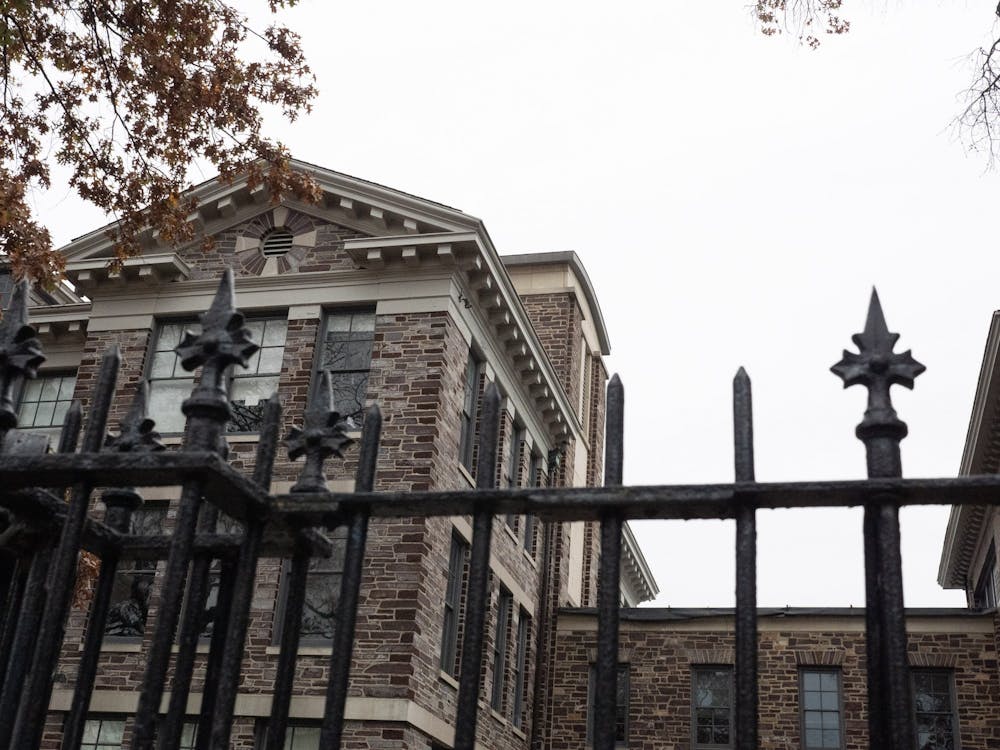The following is a letter to the editor and reflects the author’s views alone. For information on how to submit a letter to the Opinion Section, click here.
To the Editor:
I’m glad to see that the conversation about my class — VIS 321: Words As Objects — continues. I commend students — from my class, in the visual arts department, and others — who have expressed their opinions online and in this paper, including those who have called for my termination, for exercising their free speech rights.
However, my reading of the Jonah Mixon-Webster poem was not only about free speech, but also about responsibility. While I assembled materials for this course, it was my duty, as a professor, to gather from as wide a range of artworks where words function as objects as possible. I looked to the clever word play of Kay Rosen to the annihilating logic of Adrian Piper and the provocations of Mixon-Webster.
None of the art that these artists produced, or that of the dozens of others I featured in my course, were intended to “provoke a reaction” or be used as “tools,” as The Daily Princetonian Editorial Board would have it.
The artworks featured in the course were, instead, propositions, presented for the general edification of students: to help them discover what they like and don’t like; to help them find their own place within artistic practice; and to figure out what they themselves want to say and make in the class.
Scrubbing the explicit content of artists like Mixon-Webster from the spectrum of pedagogical possibilities still strikes me as dishonest and untenable. Consequently, attempts or demands for me to be punished for literally citing the content of a poem published by Jonah Mixon-Webster last year is tantamount to shooting the messenger. When it comes to compiling my course materials, I will continue to take my cues from artists, rather than newspaper editorial boards, student or otherwise. The fact that I even have to write that sentence is astounding. Lost in this debate is any sense of the larger, and sinister, absurdity of having one’s syllabus vetted by ‘authorities.’
As for my own practice as an artist, which Omar Farah and others have brought into play, I would recommend that anyone claiming that I am a racist or have performed blackface, do the necessary primary research. Yes, there are many instances of disruptive and controversial behavior in my career as an artist, but to my mind this comes with the territory.

In general, I take the Classical Greek view of art as a context in which terrible, horrible, unthinkable things happen so that we, as human beings, can contemplate them at a safe remove from real life. For example, my Pay Dirt image is not blackface, but an obvious reference to social justice labor photography, the dignified chronicling of working class people who got dirty for a living. Just Google “dirty faces” and any of these photographers’ names — Lewis Hine, Bill Brandt, Dorothea Lange, Richard Avedon, or Milton Rogovin — and you’ll see the clear, historically researched context for the image in question. Further research about Pay Dirt will reveal that the image was made in Birmingham, England, as part of a show about entrepreneurship, data mining, and the production and sale of dirt.
As everyone is taught in Art History 101, just because two things look similar doesn’t mean that they have anything to do with each other. In any case, formally and technically speaking, Pay Dirt bears little resemblance to blackface unless you are motivationally biased to insist that it does, which is a malicious and willfully false assertion.
Likewise, I doubt that Farah and many others currently up in arms about Donelle Woolford have seen any of the project’s set designs or performances in person. Nor is it likely that they’ve done any background into devised theater, parafiction, or Jennifer Kidwell, a 2021 Hodder Fellow, who has publicly defended our Donelle Woolford collaboration.
That students engaged in higher education, let alone Princeton Arts and Hodder fellows, would form opinions about artworks they’ve probably neither seen, nor researched, is anathema to academia and critical inquiry.

At this point, I am forced to assume that almost no one has read any of Jonah Mixon-Webster’s poetry either. Which is a shame, because the whole point for me of teaching his work was for it to be seen and read.
Joe Scanlan is a Professor of Visual Arts at Princeton University. He served as Director of the Visual Arts program from 2009–2017.








